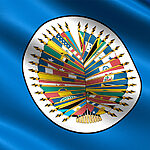Sources of Law in International Organisations
The laws of an international organisation (IO) can often be difficult to identify. They may be contained in multiple documents that are not stored together or are not publicly available, they may have different names (rules, manuals, handbooks, policies, instructions, etc.) and they may be administered by internal and external stakeholders. This blog seeks to map out the different sources of law at an IO and the hierarchy of laws in any employment-related dispute. We have used the UN system for reference but the same hierarchy applies to all IOs.
What is the law of an IO?
International civil servants are bound by duties and responsibilities which are exclusively international. These duties and responsibilities stem from an understanding of and loyalty to the objectives and purposes of the relevant IO. If the impartiality of the international civil service is to be maintained, then international civil servants must remain independent of any authority outside of their organisation.
For this reason, IOs are not governed by any kind of domestic law but fall under a body of internal rules which are established by the organisation itself. Internal rules become applicable to parties upon the establishment of an employment relationship between the individual and the IO.
These rules ensure that all staff members are placed under similar working conditions and have the same legal guarantees, regardless of their nationality, place of recruitment or duty station. Such rules establish rights and obligations which staff members must comply with in carrying out the work of the organisation and provide mechanisms for the imposition of disciplinary sanctions or the settlement of employment-related disputes.
The hierarchy of sources
The sources of law of the international civil service are well settled and are organised in a clear hierarchy. This hierarchy was set out by the UN Dispute Tribunal in the Villamoran decision and is reiterated in the UN Human Resources Portal.
At the top of the hierarchy… is the Charter of the United Nations, followed by resolutions of the General Assembly, staff regulations, staff rules, Secretary-General’s bulletins and administrative instructions…
Information circulars, office guidelines, manuals and memoranda are at the very bottom of the hierarchy and lack the legal authority vested in properly promulgated administrative issuances.
At the top: the Constitution
The fundamental governance document of an IO is its constitution. This document provides the basic legal grounding for all rules relating to the international civil service and exists at the top of the hierarchy of sources of law for any organisation.
The constitution defines the powers and authorities of an organisation and how it can promulgate other internal laws. However, constitutions are usually too broad and general in nature to provide specific solutions to employment disputes, which is why organisations have a separate set of staff rules and regulations.
For example, the UN Charter (1945) describes the purpose of the UN, the mechanics of how it functions, the duties of the Secretary-General and the General Assembly. Article 101 provides that “the staff shall be appointed by the Secretary-General under regulations established by the General Assembly.” This why the preamble to the UN Staff Rules states:
Under the Charter of the United Nations, the General Assembly provides staff regulations which set out the broad principles of human resources policy for the staffing and administration of the Secretariat and the separately administered funds and programmes. The Secretary-General is required by the staff regulations to provide and enforce such staff rules, consistent with these principles, as he considers necessary.
Primary source: Staff Rules and Regulations
“Staff regulations” are usually quite brief and general in nature, as they aim to identify a standard set of principles which govern the conduct of staff members and their relationship with the IO. Staff regulations are usually supplemented by “staff rules,” which more specifically regulate the matters set out in the staff regulations. The staff rules outline the conditions of service for international civil servants and describe the rights, duties and obligations of both staff members and the IO (i.e. its management). They can be found in a stand-alone document or they might be incorporated into the IO’s constitution as an annex.
Staff rules carry legal force and are equivalent to domestic legislation. If you have any issue arising from your employment relationship with an IO, the staff rules are your primary source of law to understand how the IO regulates employment issues.
Staff rules and regulations may also be supplemented by commentary which provides additional context for applying the rule or regulation in question. Commentary may also assist staff members in understanding the specific provision and therefore make the administrative appeals process more accessible to them. For example, the Secretary-General Bulletin on the Status, Basic Rights and Duties of United Nations Staff Members is accompanied by an official guide for the use of management and staff on the scope and application of the rules contained in its annex.
Commentary is not part of the staff rules and regulations and is therefore not a legal norm which can be enforced by staff members against the IO. However, it is still a useful source which staff members may safely rely upon to guide their actions. Commentary confirms how the IO interprets the staff rules and is therefore important for staff members to understand the scope of their rights and obligations as an employee.
Secondary source: Policies
Staff rules and regulations are usually supplemented by a number of “policies” which take various different formats, such as Secretary-General’s bulletins, administrative directives, information circulars, guidelines and agreements. Numerous examples of these policies can be found on the UN’s Human Resources Portal.
For directives that “regulate matters of general application and directly concern the rights and obligations of staff and the Organization” to have legal effect, they must follow a clear procedure of promulgation and publication. In Villamoran, the UN Office of Human Resources Management issued a memorandum on contractual reform, stating that certain staff on fixed-term appointments who had not found a new appointment would either transition to temporary appointments or be separated. The UN Dispute Tribunal held that this memorandum sought to unilaterally vary the applicant’s terms of appointment and therefore needed to have followed the required procedures and proper publication to have legal force. It had not been circulated publicly, was not available to staff members at large, had not been provided to the applicant when she requested it, and it was not clear that the author of the memorandum had the delegated authority to impose the reform in the first place. The Tribunal held that decisions made in reliance upon this memorandum were unlawful.
As well as formal directives, IOs also implement HR policies through information circulars, policy guidelines, memoranda and manuals. Do not be distracted by the title of these documents – the two questions you should ask are (1) does this policy directly impact my employment rights; and (2) was the policy properly promulgated? If the answer is yes, then the policy should be treated as part of the IO’s internal law. If the answer is no, the policy can be relied upon as evidence of the IO’s general practice, but is not part of the IO’s laws.
Secondary source: Case Law from International Administrative Tribunals
International administrative tribunals are an essential part of the internal justice system of IOs to settle employment disputes. They are the ‘court of last resort’ for international civil servants. Without them, a staff member would have no recourse against their employer and there would be no accountability for the IO.
The cases that reach this final stage of litigation usually require the tribunal to provide the proper interpretation of the IO’s staff rules and regulations. Over time, the jurisprudence from these tribunals, especially the ILOAT, the UNAT and the World Bank Administrative Tribunal, has also defined general principles of international administrative law, such as the doctrine on acquired rights and equal treatment. Of course, every case has to be considered on its own facts, and one tribunal is not bound by the case law from another tribunal. However, tribunals will generally try to encourage a consistent interpretation of the same topics in order to foster the harmonization of international administrative law.
Jurisprudence is therefore an additional source of law that staff members should rely upon in order to remind the IO of how a tribunal would review and decide any employment dispute. Being aware of the relevant and applicable case law can often assist in the early resolution of a dispute in the internal appeal stages.










